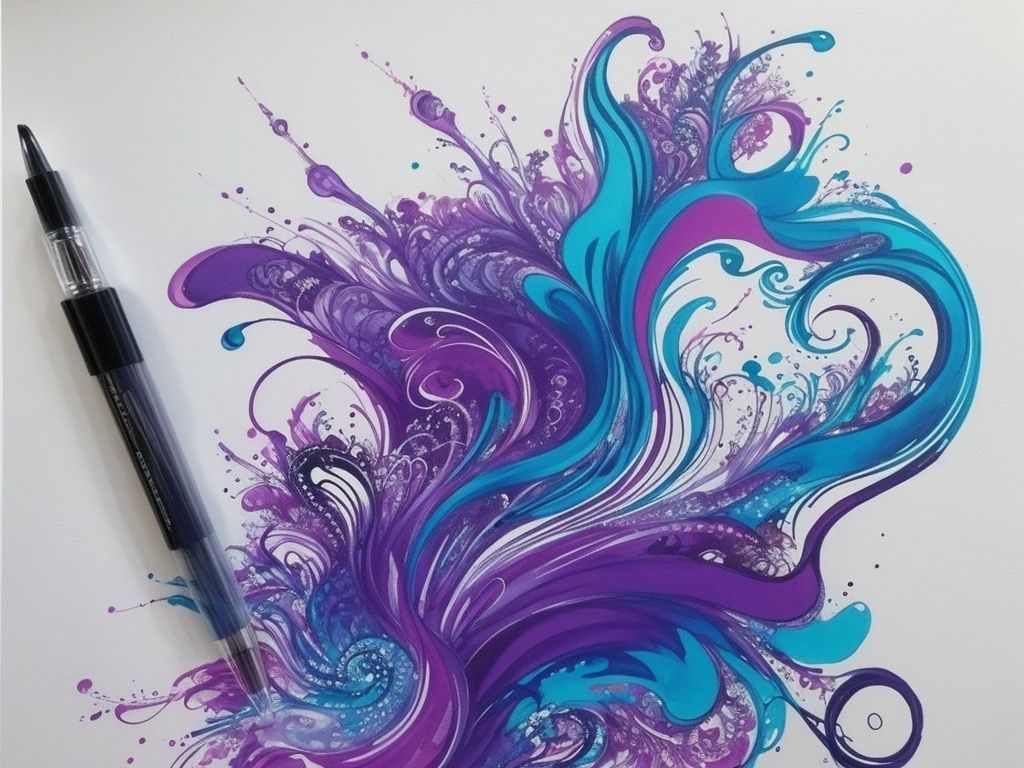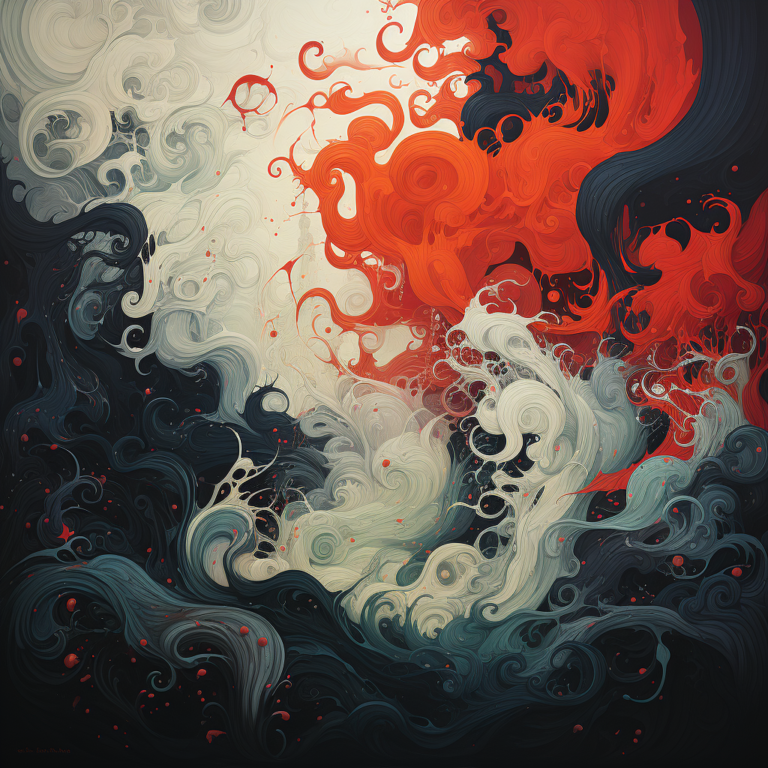Sharpies, those omnipresent permanent markers, have an allure that attracts us like moths to a flame. We’ve all asked ourselves: why do we find it so appealing? We’ll explore the science of Sharpies’ fascinating smell in this article and discover the mystery behind its charm.
Not all markers possess the same bewitching scent as Sharpies. This is because Sharpies contain a special blend of chemicals responsible for their particular aroma. Ethanol is one of the main elements, which produces the pungent smell. This volatile solvent evaporates quickly, emitting molecules into the air that reach our noses and draw our attention.
But there’s more! Sharpie researchers have fine-tuned their ink formula to intensify the smell. Even though safety probably has the priority, Sharpie understands the power of scent in creating a remarkable user experience. They’ve modified the chemical composition of their ink to produce an addictive aroma that keeps users coming back.
It turns out that there’s a psychological part to our magnetism to Sharpies’ smell too. Smell is deeply related to memory and emotions. The smell of an uncapped Sharpie can take us back to our childhood classrooms or remind us of accomplishments when we used them. This emotional bond reinforces our fascination with this regular writing tool.
Pro Tip: The next time you use a Sharpie, savor the captivating smell and reflect on how a mere odor can bring back vivid memories and feelings. It’s incredible how science can uncover secrets hidden in everyday objects like a plain marker.
The Science Behind Sharpies’ Addictive Smell
The aroma of Sharpie markers has allured many. But what’s the science behind it? Let’s explore the chemical composition and processes that create this amazing smell.
It’s all about the solvents and dyes used in Sharpies. These evaporate quickly when exposed to air, releasing Volatile Organic Compounds (VOCs). These VOCs are primarily alcohols, ketones, and aromatic compounds. They transition from liquid to gas easily when the marker is opened. Our noses detect the molecules released into the air.
Each color of Sharpie may have a different odor due to variations in the pigments used. This adds complexity to the experience.
Although some love the smell, others may have adverse effects from prolonged exposure to VOCs. Therefore, it’s recommended to use markers in well-ventilated areas.
Pro Tip: For those who love the scent but don’t want to inhale large amounts of VOCs, place an uncapped marker near a fan or air purifier. Enjoy the aroma with less risk.
Unintended Consequences
Do you know about the unintended consequences of Sharpie’s irresistible smell? Let’s discover them!
Let’s break it down. Here’s a table:
| Unintended Consequences | Effects |
|---|---|
| Creative Inspiration | Can spark creativity. |
| Increased Productivity | Can boost focus and productivity. |
| Enhanced Memory | May improve memory retention. |
| Emotional Associations | Can evoke strong emotional responses. |
The smell can last for hours and leave an impression on our senses.
Here’s an example. A famous artist said that the smell of a freshly opened Sharpie package took her back to childhood memories and sparked her creative genius.
The power of scents is evident in this story. And we’re still learning how the smell of Sharpies has more than practical applications.
The Cultural Significance of Sharpie Smell
The scent of Sharpie markers is more than just a nice smell; it’s a part of our culture. People of all ages love this distinctive aroma, as it brings back nostalgic feelings and encourages creativity. So what makes the Sharpie scent so irresistible?
The key component is xylene, a solvent used in the ink formula. This chemical gives Sharpies their strong scent that we’ve all come to recognize.
The smell can bring back fond memories, like signing yearbooks or doing art projects. Plus, Sharpies are often linked to creativity, which makes the scent even more attractive.
Tip: If you don’t want the strong smell, try using scented markers or water-based markers. These alternatives still let you create art without the overpowering odor.
The Future of Sharpies and Scented Products
Sharpies are the future of scented products. People are drawn to their distinct smell. An exploration of this reveals facts about demand, diversification, and innovation.
VOCs are the chemicals that create the aroma from Sharpies. They are usually found in permanent markers.
Consumers must take advantage of upcoming Sharpie scented product releases. Enjoy the sensory experience. Don’t miss out!
Conclusion
The captivating smell of Sharpies has long intrigued users and scientists. Delving into the science behind it, reveals fascinating details about its addictive aroma.
Chemical compounds, such as alcohols and esters, blend together to create the distinct odor that our olfactory receptors love. Brain studies show that this scent releases dopamine and triggers pleasure sensations. Plus, it can also stimulate creativity and focus.
More research could explore the physiological reactions from prolonged exposure to these fumes. Now, how can you make the most of Sharpies? Unleash your creativity and explore their unique sensory journey.
Every time you uncap a Sharpie, you unlock more than ink – you unlock scents that inspire and invigorate. Let your imagination soar with each stroke of the pen. Unlock your inner artist today!
Frequently Asked Questions
FAQs:
1. What makes Sharpies’ smell so addictive?
Sharpies’ smell is often considered addictive due to the presence of chemicals like toluene and xylene. These compounds can stimulate certain receptors in the brain, triggering pleasurable sensations and creating a sense of addiction.
2. Is the smell of Sharpies harmful?
While the smell of Sharpies might be enticing, inhaling excessive amounts of the chemicals can be harmful. Prolonged exposure to toluene and xylene can cause dizziness, headaches, nausea, and even long-term health effects. It is best to use them in well-ventilated areas.
3. Can using Sharpies have any negative health effects?
Using Sharpies as intended, such as for writing or drawing on surfaces, is generally safe. However, prolonged and repeated skin exposure to the ink can cause skin irritation or allergic reactions in some individuals. It is advisable to avoid direct contact with the skin.
4. Are Sharpies non-toxic?
Sharpies are labeled as non-toxic, meaning they do not contain substances that are known to be immediately harmful or poisonous. However, ingestion of Sharpie ink or accidental misuse can still lead to health issues, especially in young children. Keep them out of reach of children.
5. Can the addictive smell of Sharpies be replicated in other products?
The addictive smell of Sharpies is unique to the specific combination of chemicals they contain. Replicating it in other products would require using the same or similar compounds, but it’s important to note that intentionally producing addictive smells may have ethical concerns.
6. Can prolonged exposure to Sharpie fumes cause addiction?
Prolonged exposure to Sharpie fumes can create a conditioned response in the brain, where the brain associates the smell with positive sensations. However, it is important to differentiate between addiction and conditioned response. The addictive potential of Sharpie smell is still considered relatively low compared to substances like drugs or alcohol.




